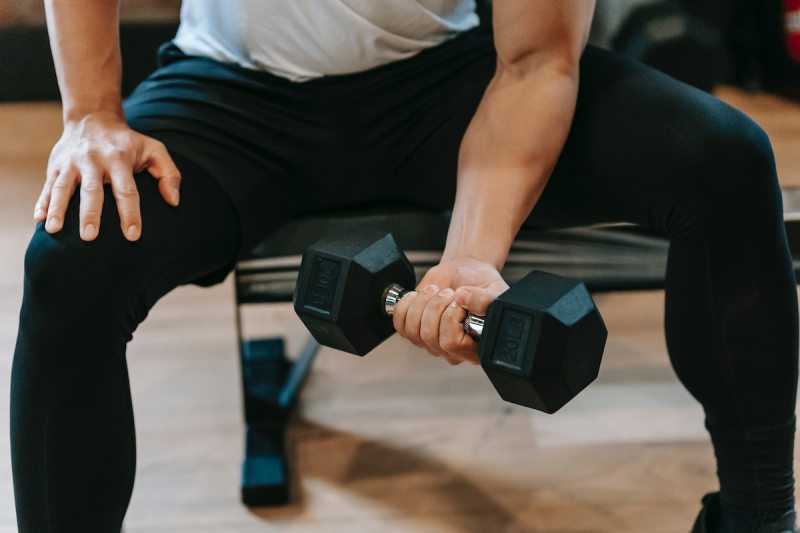
Getting started with any type of exercise can be intimidating; there is often a lot of technique to learn and if you are out of shape, it might feel impossibly difficult. While this can certainly apply to anything from running to the practice of yoga, it’s perhaps no more true than when discussing weightlifting. Weightlifting, also referred to as resistance training or strength training, is an excellent workout, and a favorite form of exercise for many guys. That said, if you’re just beginning weightlifting, you may be filled with trepidation, wondering how to even get started.
You’re not alone; many people feel too intimidated or bewildered by the whole world of strength training to even get started. However, with just a little orientation and some safety tips and pointers, you can easily get started lifting weights and building strength. Even if it’s been months (or years) since you’ve been working out with any sort of consistency, it’s possible to start a safe, effective strength training program that will make you stronger, fitter, and more confident in your body. Ready to start building muscle? Keep reading for our complete beginner’s guide to weightlifting and strength training and challenge yourself to try a few exercises today.
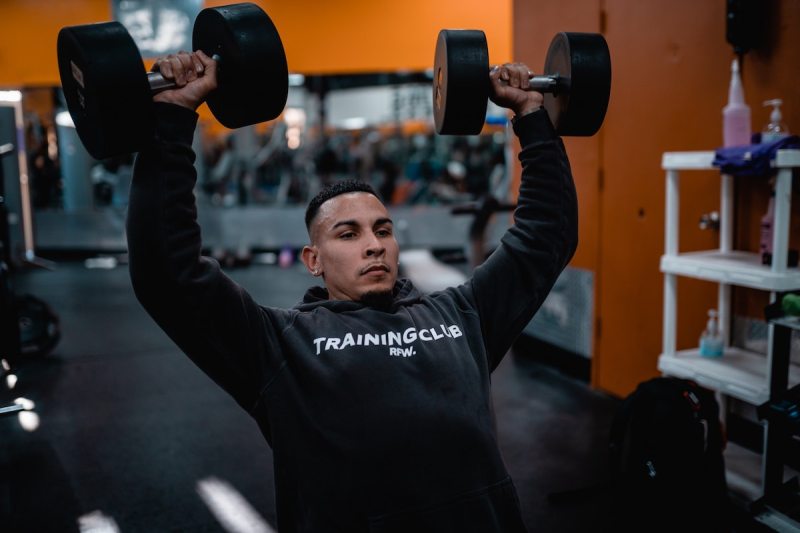
What is weightlifting?
When you’re new to weightlifting, even the terminology can be confusing because there are several interchangeable terms for essentially the same thing. Weightlifting may also be referred to as weight training, strength training, or resistance training. Regardless of the term used, all of these terms refer to performing specific exercises with some form of resistance to increase muscular strength. The resistance may be dumbbells, barbells, kettlebells, other types of weights, resistance machines, elastic bands, or even just your body weight. The type of resistance you use when strength training doesn’t matter as long as the muscles you are targeting are working against a load of some sort. If you don’t have access to a gym, you can even use items around your home like gallon jugs of water or bags of rice.

Benefits of weightlifting
Every form of exercise improves your fitness and certain markers of health in some way, but the specific benefits depend on the mode of exercise and the intensity with which you perform it. Strength training or lifting weights is one of the most effective forms of exercise because it provides a wide range of important benefits, including the following:
- Building lean body mass
- Reducing body fat
- Increasing metabolic rate
- Increasing bone density
- Preventing musculoskeletal injuries
- Strengthening muscles, tendons, and ligaments
- Improving neuromuscular control
- Elevating athletic performance, speed, power, efficiency, and economy
- Increasing core strength
- Decreasing blood pressure
- Reducing waist circumference
- Optimizing hormonal balance and regulation
- Boosting confidence
- Improving mood
- Decreasing anxiety and stress

Weightlifting equipment
There are quite a few implements that can be used for strength training, each providing the general benefit of challenging your muscles to increase strength, but each also offers unique perks as well. A well-rounded weightlifting program will make use of different types of resistance equipment to take advantage of the swath of benefits across each. While not an exhaustive list, the following are some of the more common pieces of strength training equipment:
- Dumbbells
- Barbells
- Weight machines
- Kettlebells
- Sandbags
- Resistance bands
- Weighted vests
- Suspension training straps
- Medicine balls
It’s important to note that your body weight can also serve as resistance in a strength training exercise. Particularly when you are just getting started with strength training, bodyweight exercises can be an excellent way to focus on form and technique while still working your muscles. Even advanced athletes can still get in a challenging workout using body weight only.
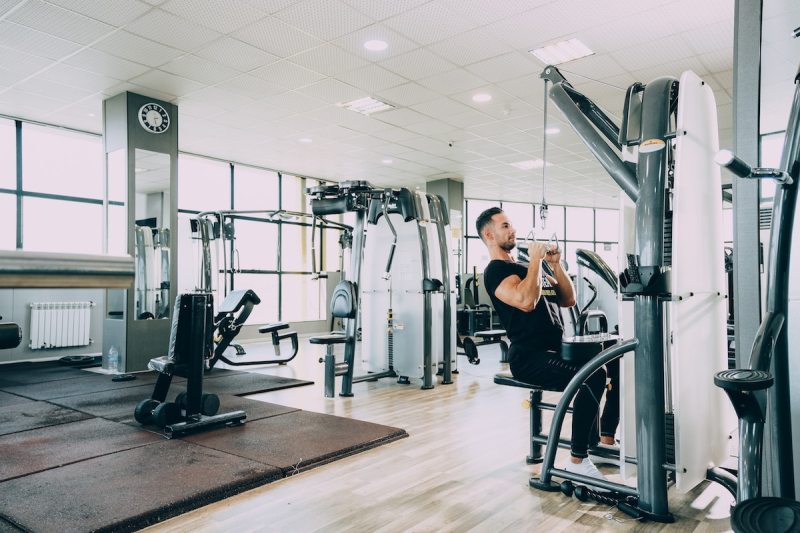
How often should I strength train?
In general, it’s recommended that you strength train at least 2-3 times per week, depending on your fitness goals, weightlifting workouts, and overall exercise routine. A marathon runner, for example, will benefit from total-body resistance training workouts 2-3 times per week to supplement running mileage, but may not have time for additional lifting. On the other hand, if you’re not focusing on a single sport but rather general overall

Strength training exercise for beginners
There are tons of very good strength training exercises, and that wide variety of possible workouts is certainly one of the reasons that beginners often feel overwhelmed. However, mastering a few of the basic resistance exercises over your first few weeks will give you a solid foundation to learn various modifications and advanced moves. The following are some of our favorite weight training moves for beginners:
- Squats
- Deadlifts
- Step-ups
- Forward and reverse lunges
- Bulgarian split squats
- Pull-ups
- Farmer’s carries
- Rows
- Push-ups
- Chest press/bench press
- Chest fly
- Reverse fly
- Planks
- Dips
- Curls
- Hamstring curls
- Calf raises
- Overhead presses
- Bird dog
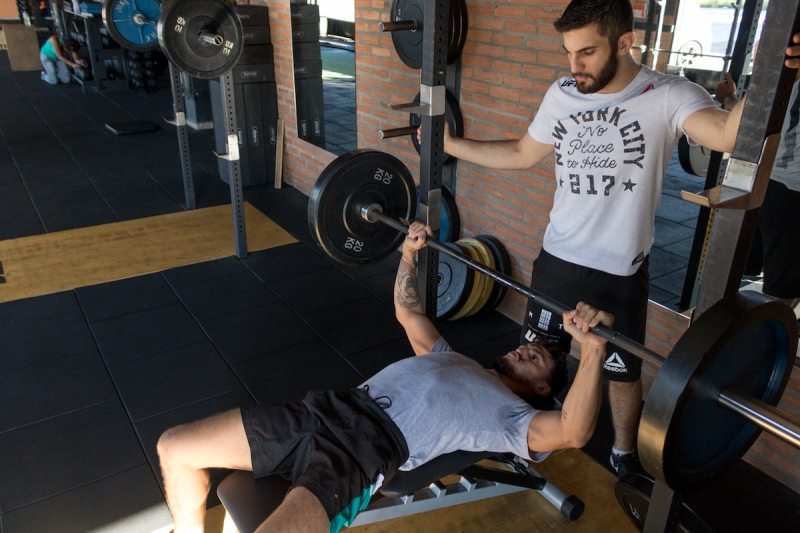
Strength training tips for beginners
Learning how to properly lift weights is the key to ensuring your workouts will build strength, prevent injury, and improve your fitness. The following are some helpful weightlifting tips for beginners:
Use a spotter
Safety should always be at the forefront of your mind when lifting weights. Recruit a buddy or work with a trainer if you’re going to be attempting heavy lifts with dumbbells, barbells, or other free weights.
Focus on your form
Using proper form is not only critical for preventing injuries when weight training, but it also ensures the exercise is effective. It’s always most important to prioritize form and technique over reps and load. If you find that you can’t maintain the correct form for all reps in a set, reduce the weight you are using, and if your form starts to break down during the set, stop. It’s not worth it to risk hurting yourself to eke out a few more reps.
Don’t cheat
For any exercise to be effective, you have to use your muscles. Therefore, with any weightlifting exercise, concentrate on moving slowly and deliberately throughout the movements without relying on momentum or swinging the weights. Similarly, don’t let gravity do all the work on the way down; control the weight with an eccentric contraction.
Progress to make progress
You have to use enough weight or resistance to provide a load sufficient to stimulate your muscles to get stronger. Select a weight that you can lift with good form for the full range of motion of the exercise for 8-12 reps. If you can get to 15, it’s time to bump up to a higher weight. If you’re focused on building muscle mass, you’ll want to drop these reps to even lower—like 6-8 max—and bump up the weight.
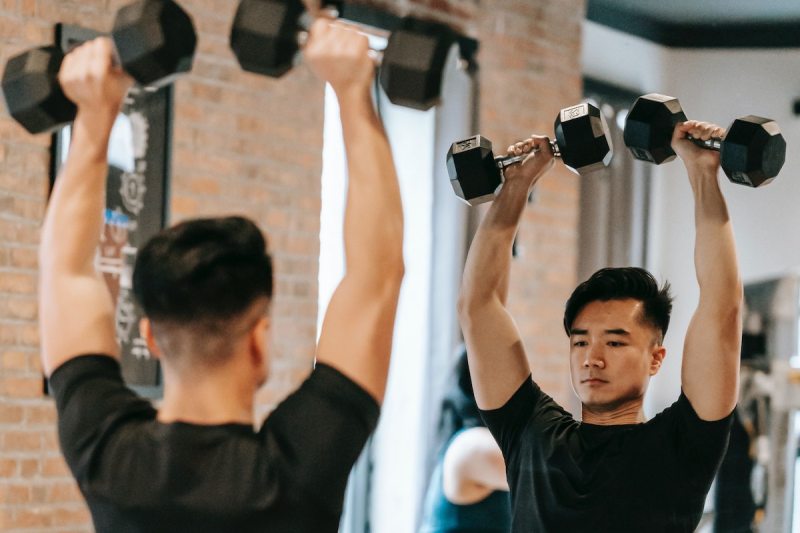
Watch yourself
Most gyms have multiple mirrors. These aren’t just for giving you an ego boost when you nonchalantly flex as you walk by; rather, performing your strength training exercises in front of a mirror can help you watch your form and correct any issues.
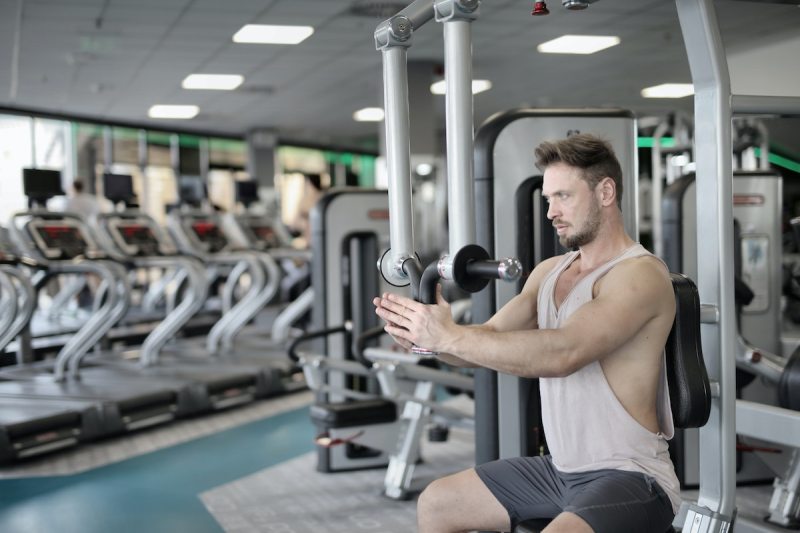
Don’t shy away from weight machines
Although free weights like dumbbells and kettlebells provide a more functional form of training and recruit additional muscles like those comprising the core, there are certain benefits to using weight machines, especially for beginners. The weight machine will help you control the weight and will only allow you to move in the intended plane of motion. In this way, using a weight machine can help you master the basic technique and movement pattern while reducing the risk of injury.
Mix it up
You’ll derive the greatest benefits from your weightlifting workouts if you vary the exercises you do, the form of resistance you use, and the volume (reps, sets, and load). Variety will also prevent boredom and burnout and will keep you motivated and having fun.
Be patient
Remember, the strongest guys in your gym were beginners once too; give yourself grace and time to develop technique and build strength. You’ll get there.
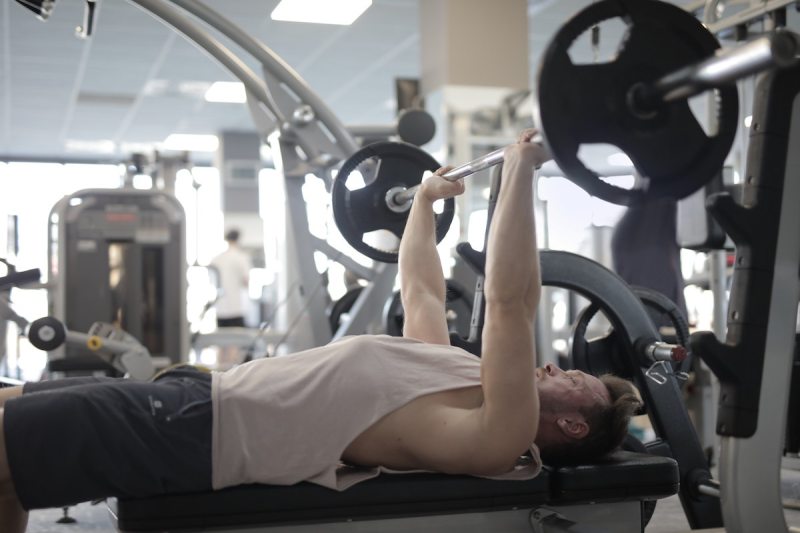
The best way to start a weightlifting routine
As we’ve been saying, developing a weightlifting time requires patience as you perfect your method and build strength. Here are some more tips from the Mayo Clinic on the best ways to get started with weightlifting or resistance training.
- Be sure to warm up. As with any form of exercise, you need to warm up before lifting weights to help prevent injury; a short walk and some stretching are good ways to prepare your body.
- Don’t try to lift too much weight. It can be tempting to try and show off your strength, but if you’re just getting started, go with lighter weights to avoid post-workout muscle soreness and injury.
- Take it slow. Slow and steady is the key to a good weightlifting routine. Resist the temptation to add on too much weight too quickly. That also holds when you’re lifting; lift the weights at a slow and steady pace, which will help build strength.
- Shut it down if you’re hurting. If an exercise is painful, don’t try to tough it out. Stop right away to avoid injury.



